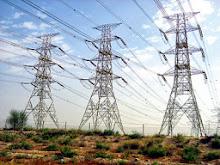EDDY CURRENTS
EDDY
CURRENTS
In the discussion on the previous
page you learned about electromagnetic induction. You
learned that anytime a conductor was placed in a changing magnetic
field that electrical current was generated in the conductor.
We talked about the conductor being a piece of wire that is often
wrapped into a coil, but the conductor does not need to be in
the shape of a coil and does not even need to be wire. It could
be a piece of flat steel, aluminum plate, or any other conductive
object. The only requirement is that the object must be able to
conduct electrical current.
When current is induced in a conductor
such as the square piece of metal shown above, the induced current
often flows in small circles that are strongest at the surface
and penetrate a short distance into the material. These current
flow patterns are thought to resemble eddies in a stream, which
are the tornado looking swirls of the water that we sometimes
see. Because of this presumed resemblance, the electrical currents
were named eddy currents.
Uses of eddy currents
Just like in our transformer experiment,
these induced eddy currents generate their own magnetic field.
After all, this is an actual electrical current and any current
flowing in a conductor produces a magnetic field, right? The detection
and measurements of the strength of the magnetic fields produced
by the eddy currents makes it possible for us to learn things
about conductive materials without even contacting them. For example,
the electrical conductivity of a material can be determined by
the strength of the eddy currents that form. Also since cracks
and other breaks in the surface of a material will prevent eddy
currents from forming in that region of the surface, eddy currents
can be used to detect cracks in materials. This is referred to
as eddy current testing in the field of nondestructive testing
(NDT). NDT technicians and engineers use eddy current testing
to find cracks and other flaws in part of airplanes and other
systems where bad things can happen if the part breaks. On the
next page you will learn more about eddy current testing and be
able to try an inspection yourself.











0 comments:
Post a Comment